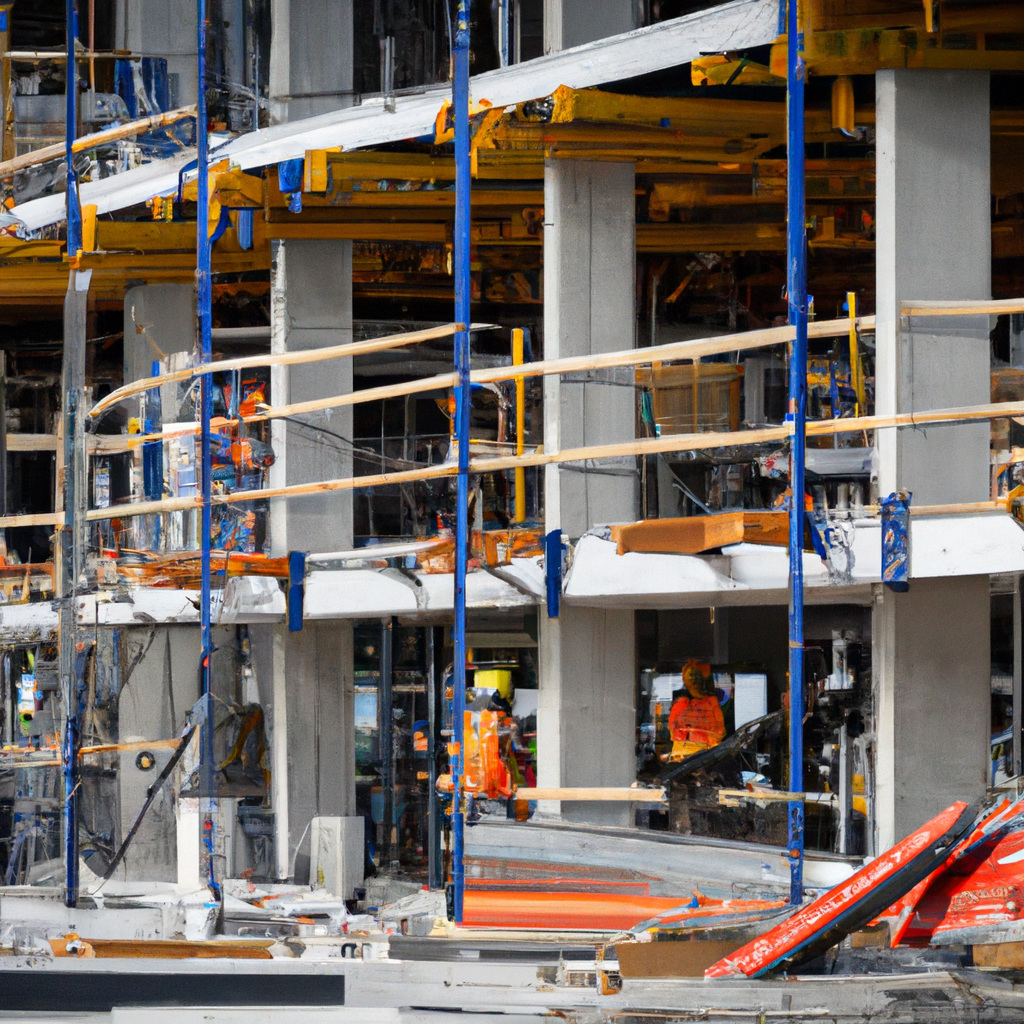We prioritize safety above all else when it comes to scaffold construction sites. We understand the potential risks and hazards involved in this line of work, and we are committed to providing a foolproof system that ensures the well-being of our workers. In this comprehensive guide, we will outline the essential protocols that should be implemented to create a safe and secure scaffold construction site.

Conducting Thorough Risk Assessments
Before beginning any scaffold construction project, it is crucial to conduct a thorough risk assessment. This assessment should identify potential hazards, evaluate their severity, and determine appropriate control measures. By identifying and addressing risks proactively, we can prevent accidents and ensure a safer working environment.
During the risk assessment process, it is important to consider factors such as the height and complexity of the scaffold, the weather conditions, the presence of nearby structures or utilities, and the experience level of the workers involved. By taking all these factors into account, we can tailor our safety protocols to suit the specific needs of each project.
Providing Comprehensive Training
One of the most effective ways to prevent accidents on a scaffold construction site is by providing comprehensive training to all workers. Proper training ensures that employees are equipped with the knowledge and skills necessary to perform their tasks safely.
Training should cover a range of topics, including scaffold assembly and disassembly, fall protection measures, hazard identification, emergency procedures, and the proper use of personal protective equipment (PPE). Regular refresher courses should also be conducted to reinforce these safety practices and update workers on any new regulations or advancements in the industry.
Ensuring Adequate Supervision
Effective supervision is essential for maintaining a safe scaffold construction site. Experienced supervisors should be present at all times to oversee the work being carried out and provide guidance and support to the workers.
Supervisors should be knowledgeable about scaffold construction best practices and safety protocols. They should conduct regular inspections to ensure that all scaffolds are erected and maintained correctly, and that workers are adhering to safety guidelines. By maintaining a visible and active presence on-site, supervisors can quickly identify and address any potential safety issues before they escalate.
Implementing Fall Protection Measures
Falls from height are one of the most common accidents on scaffold construction sites, and they can result in severe injuries or even fatalities. To mitigate this risk, it is crucial to implement effective fall protection measures.
These measures may include the installation of guardrails, toe boards, and safety nets around the scaffold, as well as the use of personal fall arrest systems (PFAS) for workers. PFAS should be inspected regularly to ensure they are in good working condition, and workers should be trained on how to properly use and maintain them.
Regular Inspections and Maintenance
Regular inspections and maintenance are vital for ensuring the structural integrity and safety of scaffolds. A qualified individual should conduct thorough inspections before each work shift and after any adverse weather conditions or alterations to the scaffold.
During inspections, potential issues such as loose or damaged components, unstable foundations, or signs of deterioration should be identified and addressed promptly. Additionally, a detailed maintenance schedule should be implemented to ensure that scaffolds are well-maintained and in compliance with safety regulations.
Promoting Open Communication and Reporting
Establishing a culture of open communication and reporting is essential for maintaining a safe scaffold construction site. Workers should feel comfortable reporting any safety concerns or near-miss incidents without fear of reprisal.
Regular safety meetings should be held to provide a platform for workers to discuss safety-related matters, share experiences, and suggest improvements. By fostering an environment that encourages open communication, we can identify potential hazards early on and take the necessary measures to prevent accidents.
Conclusion
Safety should always be the top priority when it comes to scaffold construction sites. By implementing the essential protocols outlined in this guide, we can create a foolproof system that ensures the well-being of our workers and minimizes the risk of accidents.
At [Your Company Name], we are committed to upholding the highest safety standards in the industry. By conducting thorough risk assessments, providing comprehensive training, ensuring adequate supervision, implementing fall protection measures, conducting regular inspections and maintenance, and promoting open communication, we can create a scaffold construction site that is not only safe but also sets a benchmark for the industry.
Remember, safety is a collective responsibility, and by working together, we can achieve a truly foolproof scaffold construction site that prioritizes the well-being of every individual involved.


